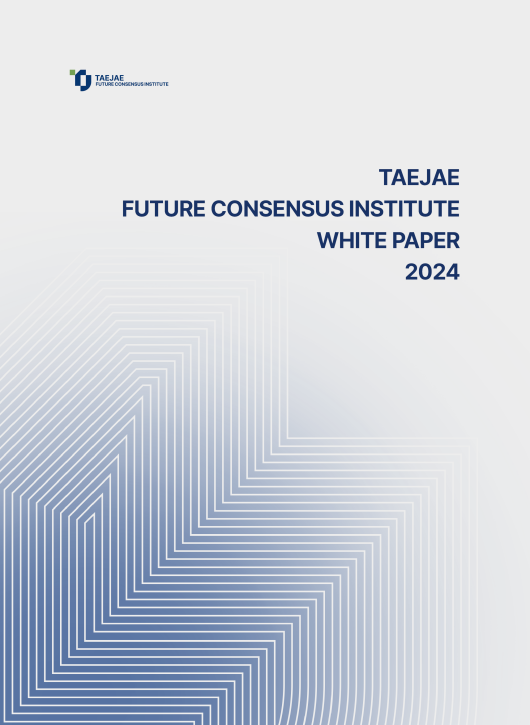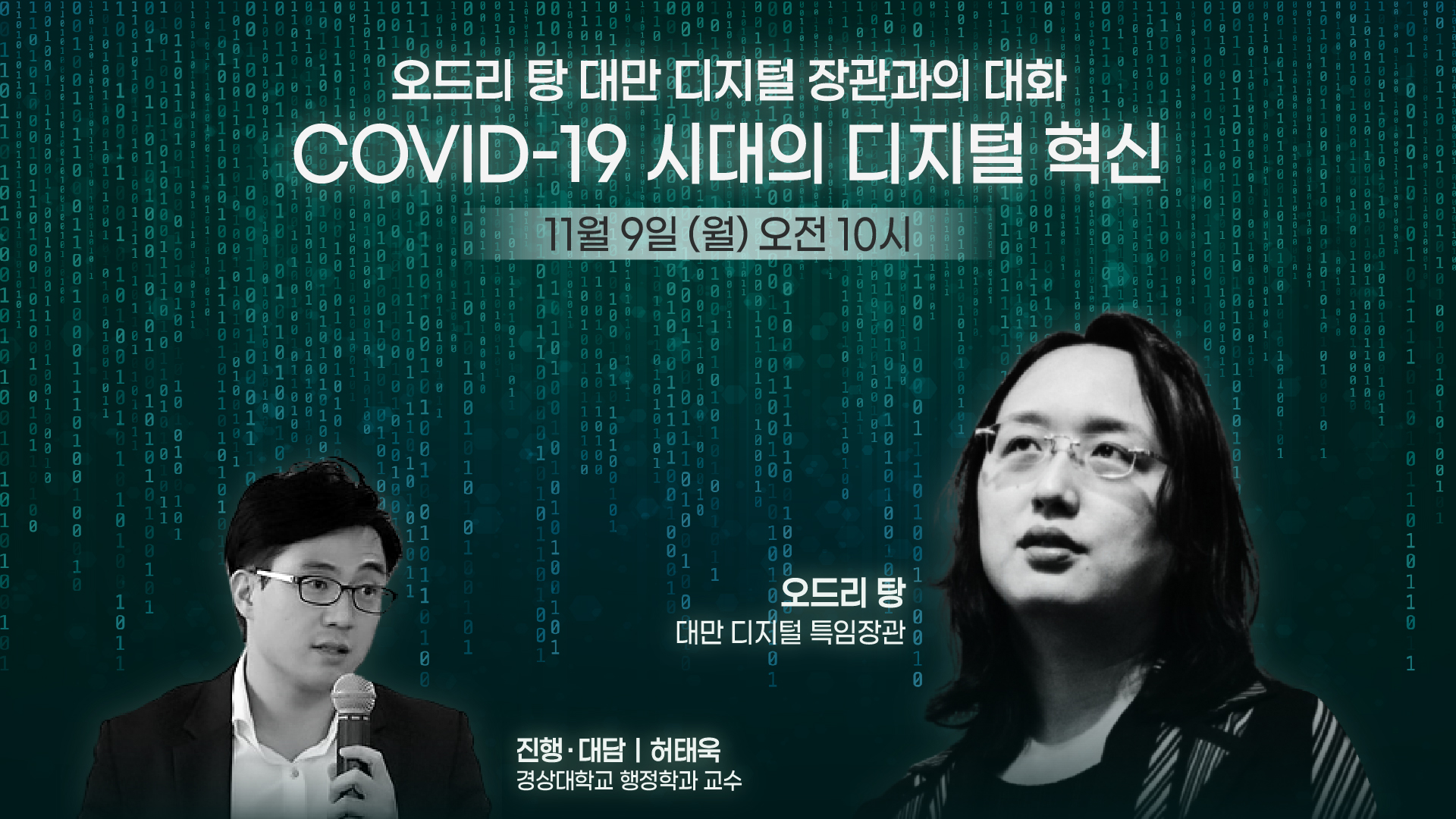Please join Yeosijae as we build a brighter future for Korea. Create your account to participate various events organized by Yeosijae.
- Insights
- |
- Global Order and Cooperation
Tapping into the Star Market to sharpen South Korea’s competitive edge
- South Korea-China Financial Cooperation in the Age of Science and Technology Innovation
cf. Star market: Shanghai Stock Exchange Science and Technology Innovation Board
Just eight months after President Xi Jinping announced that “China will launch a NASDAQ-style technology innovation-focused equities market,” China opened its doors to the Shanghai Stock Exchange Science and Technology Innovation Board (or Star market for short) on July 22, 2019, with the debut of the first batch of 25 Chinese companies on the tech-heavy market.
China’s Dilemma: Technology and Capital Market
When one examines the rise and fall of global powers over the last 500 years, one can observe that all great powers take their roots in the manufacturing sector. They begin as manufacturing powerhouses and, with time, become a force of reckoning in trade, military, and ultimately, the economy. In light of this trend, it was only natural for China to cross swords with the U.S. following the inauguration of President Donald Trump in 2017.
Just as small powers have their own set of challenges, so too the nations of great power. China emerged as a global superpower in just 42 years after the initiation of economic reforms in 1978. However, with a GDP of about 71% of the U.S., it now faces new problems that are unique to powerful nations. And with the U.S. mounting pressure over the past two years under the guise of a trade war, leaders in the Western world began to raise criticisms that President Xi may have “popped the champagne” too early on his Chinese Dream.
The circumstances, however, are different from Chinese perspectives. With the world’s second-largest economy and a GDP of about 71% of the U.S., China can no longer conceal itself from the eyes of the world. With no place to hide, China saw that it would be better to fight than to flee. Consequently, they have stood against the U.S. on various issues over the past two years, despite mounting pressure from the Trump administration.
If we look at China from the four aspects of manufacturing, trade, military, and finance in comparison with the U.S., we discover that China has already overtaken the U.S. in manufacturing and trade sectors in 2019 by 179% and 110%, respectively. And this served as the basis for Beijing’s strong stance against Washington in their trade dispute.
But in regards to the country’s military and financial power, China measures up to just 36% and 3% of the U.S., respectively. As such, though Beijing raised a fuss when the U.S. began to impose restrictions on China’s largest telecommunications company, Huawei, and semiconductor foundry company, Semiconductor Manufacturing International Corporation (SMIC), there are hardly any concrete measures for China to take to hit back the U.S. in this war.
Since joining the World Trade Organization in 2001, China has gradually increased access to all of its markets but one—the financial sector. With no need for capital accumulation due to the socialist nature of its society, the Chinese capital market grew at a much slower pace than other parts of its economy. And just as a baby would have a disproportionately small body compared to its large head, the country’s financial sector remains relatively underdeveloped compared to its highly competitive manufacturing sector due to the reason mentioned above.
The U.S., in the struggle for dominance, intends to use its power in trade, technology, and finance to provoke Beijing, gain the upper hand, and profit from China. This is the same strategy that the U.S. employed after 1985 to keep Japan in check when they emerged as the second most powerful nation in the world. Trends over the last two years between the G2 indicates that the same strategy is being used again today. Under these circumstances, China’s biggest headache as the second-largest economy in the world is its comparably weaker technological and financial sectors.
“Making Short-term Sacrifices for Long-term Gains”
China’s Strategy to Attract Technologies: STAR
With the efforts from the U.S. government to keep American technologies out of the country, China is in a predicament. China has touted the internationalization of the renminbi (RMB) as its strategy to strengthen the country’s financial power, but its most pressing concerns now are the issues of technological self-reliance and the procurement of alternative technologies.
In China, there is a proverb that goes, “Give one’s flesh to take the other’s bones.” However, the strategy that the Chinese government is currently using is one that “gives stocks (or bones) to others to take their technologies (or flesh).” By employing such tactics, China is working to embrace capitalism to put leverage on it and ultimately, turn the table and outshine its glory. In other words, President Xi plans to beat the U.S. tech restrictions by taking advantage of the capital market, and this, put into action, is the Star market.

Amid rising tensions between the two global powers, China hosted the first China International Import Expo (CIIE) in Shanghai on November 5, 2018. During the expo, President Xi, who is a technocrat that studied Chemical Engineering at Tsinghua University, instructed the government to establish a technology innovation board, or Star, in Shanghai.
The new market would serve as a platform for the country to raise the capital needed by the government to support the development of advanced technologies in this era of global science and technology competition and promote the development of core technologies that are in line with the government’s agendas. For this reason, the Star market serves enterprises from high-tech industries like new-generation information technology, high-end equipment, new materials, new energy, biomedicine, big data, cloud computing, and artificial intelligence.
Unlike the establishment of other stock exchanges (such as ChiNex and SME board) that required at least two years of preparation, the Star market was ready for launch by July 2019 — just seven months after it was announced by President Xi. For 40 years since the reforms of 1978, China used its market and workforce as bait to “lure in” advanced technologies from the U.S. But the battle for technological hegemony put an end to the old system. China’s new strategy focuses on acquiring advanced technologies not by the market but from the stock exchange.
In addition to the establishment of the market, China adopted a “registration” system for Star, allowing firms with advanced technologies to apply for listings, regardless of their size and profitability, while reducing the role of regulators in the IPO process. Red chip companies were also permitted to enter the market with dual-class share structures, just as they do in the Hong Kong market, to protect early stage investors of venture businesses. Moreover, Chinese authorities allowed institutional investors to roll out special funds for Star in advance of the launch date to increase the demand for the market.
In just one year, the Star market grew to the size of 2.8754 trillion RMB, or 489 trillion won, and had listed 183 companies. What is worth highlighting about the market is its price-to-earnings ratio (PER). The Star market provides high valuations of companies and records PER of 90.3, which stands 5.9 times and 2.8 times larger than the PER of Shanghai Stock Exchange (15.4) and Shenzhen Stock Exchange (32.3), respectively.
In comparison, the PER of other markets are: 27.8 (KOSPI), 43.7 (KOSDAQ IT), 25.7 (Dow Jones), 37.2 (S&P 500), and 36.8 (NASDAQ). This means that a firm that makes a profit of 10 billion won, for example, would be valued at 368 billion won in NASDAQ, 437 billion won in KOSDAQ, and a staggering 903 billion won in STAR board.
In short, China’s new strategy lowers regulatory hurdles for companies with advanced technologies and increases their access to capital. Thus, by providing one of the highest valuation levels in the world with the Star market, China provided an incentive – in the form of capital—for Chinese companies to develop their technological capacity and for Western companies (besides those from America) to bring their technologies into the region. The country now plans to introduce a tech innovation board in Macau, the home of casinos, to lure in European tech firms.
“South Korea will have to decide which technologies to abandon and which to hold on to.”
South Korea was able to underestimate China’s growing power for years, thanks to its strong economy. Despite being a small nation with only 4% and 0.6% of China’s population and landmass, South Korea’s GDP in comparison with China was 22% in 1980 and 83% in 1994. Our confidence was justified. However, the gap between our economies grew, and by 2010, the numbers fell to 19% and 10.7% in 2020. It is estimated that it would reach 8.8% by 2025, according to the International Monetary Fund’s October estimates.
With retaliatory measures against the deployment of THAAD and the outbreak of COVID-19, the anti-Chinese sentiment in South Korea is at its highest. However, if we look at this matter in terms of the economy, hostility towards China began to grow at around the same time as when South Korea’s GDP plummeted and when the economy (in comparison with China) fell below the 20% threshold. Despite the current circumstances, we should look to China again, not as a country of “innovation”, but as a country of “tradition” and be wary of its “hegemony.”
Chinese historian Sima Qian wrote in Shiji ‘Huozhi Liezhuan’ 2000 years ago, “While people tend to denounce those endowed with ten times their own wealth, they fear those who are wealthier by a hundred folds, work for those with a thousand, and become slaves for those with ten thousand more.” His words depict a clear image of how people’s attitudes change as the wealth gap widens.
Seoul was able to speak out against Beijing when South Korea’s GDP could rival those of China. However, with the gap widening between the two countries, it is only natural that South Korea would have concerns about the changing circumstances. What, then, is to be done about the situation? Ultimately, the best answer to the question would be for South Korea to live and prosper, much more so than China.
In our struggle against the world’s factory and the leading trading nation, if we are seeking to win every battle that we come across, we must keep in mind that “slaying a hundred foes would come at the cost of seventy or eighty of our own.” South Korea has been thriving on the backbone of its factories and technologies, but now, it is time for the nation to come up with a new line of attack on China—one that uses the opponent’s strength against them.
When South Korea opened its market to the world in 1992, foreign investors jumped at the chance to make a quick buck. Though the U.S. and Japan conceded the semiconductor industry to South Korea, they continue to rake in easy money as the owners of semiconductor firms like Samsung. Likewise, it is now our turn to leverage the Chinese market to make money work for us.
Furthermore, we need to use our technologies as bait to lure in the Chinese capital and support the development of next-generation technologies with the funds that we collect from China. Technology is not something that is fixed in place. Their lifecycle does not always begin and end in the same region. Technologies confined to the boundaries of labs are essentially money pits that have a short lifespan. It is only natural that they migrate to where there is a market and where they can find a stable source of investment. This means that the market has control over technology and not the other way around.
If we cling to technologies that are on the decline in South Korea and are quickly being caught up by China, it is only a matter of time until we fall behind our global competitors. Before that becomes our reality, we must endeavor to use our technologies as bargaining chips over China and take the funds that we procure from the market to invest in new technologies. In other words, South Korean tech companies should join the Star market.
Two opposing views on South Korean companies entering the Chinese stock exchange:
“It surrenders national assets to China.” vs “It generates national wealth for South Korea.”
There are two different views on South Korean companies entering the Chinese market. One side believes that it would result in companies “handing over” technology and national assets to China, while the other side sees it as a way of “generating” national wealth. A case in point that is worth examining for this debate is the list of Chinese companies listed on the U.S. exchange market. Chinese tech companies with cutting-edge technologies are all listed on America’s NASDAQ and New York Stock Exchange (NYSE). Chinese exchange markets impose stringent requirements on companies and allow only blue-chip companies to file for an IPO. Any businesses that are in the red are barred from the market. The strict listing requirements meant that internet-based companies, which often begin their operations at a loss due to their large initial investments, could not enter the Chinese exchange market, and due to this circumstance, they opted for the U.S. market instead.
Though Americans had no access to the tightly controlled Chinese internet market, they were still able to make a profit out of Chinese internet businesses by investing in fast-growing companies like Alibaba, Jingdong, and Baidu, on American exchange markets.
However, there are varying opinions on this matter. After declaring a trade war on China, the Trump administration threatened to delist Chinese stocks from American markets, citing concerns that Chinese companies are raising money from Americans to use those said funds to make themselves more competitive and, in turn, harm American companies.
The Chinese government, on the other hand, felt that the U.S. was making a profit out of the accomplishments of Chinese companies like Alibaba, Jingdong, NetEase, and Baidu, and encouraged these tech companies to return to their homeland. With the U.S. government’s threats and the support from the Chinese government to make a U-turn, Alibaba, Jingdong, and NetEase have already returned to the Hong Kong exchange.
So which side is correct in this argument? Only the market players can answer this question. If the U.S. provides a chance for firms to raise capital, it is only natural that businesses would flock to America, and to China if it offers better access to capital than the U.S. This is because money is controlled not by patriotism but by the amount of profit. Alibaba raised 21.7 billion dollars, or 22.7 trillion won, after their IPO on the U.S. stock exchange in September 2014. It received additional funding of 13.1 billion dollars, or 15.2 trillion won, when it subsequently debuted on the Hong Kong stock exchange in November 2019. By filing for an IPO in the U.S. and Hong Kong, Alibaba was able to raise a total of 38 trillion won to finance their investments for future growth engines. The amount is equivalent to 3.6 times the net profit of the tech firm—which is 9.7 billion dollars.
Likewise, South Korean companies should make use of China’s Star market and make efforts to minimize the risk of technology leakage, delay technology transfers, and raise capital for investments in the development of next-generation technologies. If we cling to technologies that China could overtake in just three to five years, we will lose ground in the market and the technology itself will become obsolete.
To prevent this situation from occurring, South Korean companies should work not with Chinese companies but with local governments that are pressured by the central government’s push for advanced technologies and form a joint venture that will be added to the Star market. In this business model, Korean firms would provide the technology and equipment, while the Chinese counterparts would provide the funding, land, factory, and operating funds. Because South Korean companies do not have to prepare the investment funds, the joint venture will not lead to capital outflow from South Korea to China. It would, instead, create profit and simultaneously lower the cost of venture investment for Korean businesses by enabling the export of used machinery.
Local municipalities would be more than eager to provide extensive support for tech companies that can be added to the Star market since the evaluation of municipal heads and their promotion prospects depend on their effectiveness in attracting high-tech industries (such as info-technologies, cutting-edge equipment, new materials, new energy, and bio-industry) to their regions. And because the government has ownership over the land and construction companies, working with local administration can drive down construction costs for factories. Consequently, creating a joint venture will allow companies to reach the profitability threshold in the shortest time possible and start trading on the Star market.
Another advantage of this strategy is that products under the joint venture will be easier to market to state-owned companies and organizations. And because local governments seek to attract high-tech companies and create jobs in their regions with this partnership, the risk of technology leakage is relatively lower than other models of business expansion.
In other words, the joint venture will allow South Korea to profit from technologies that are bound to be surpassed by China in the years to come and raise money to invest in the development of future technologies. If one were to invest 10 billion won and receive an annual return of 1 billion won, it would require ten years to recover the initial investment. However, by forming a joint venture with local governments in China and gaining access to an exchange market with a PER of 90.3, the company would command a market value of 10 billion won, recover its investments by selling off just 20% of its shares, and raise a capital worth eight years’ worth of revenue. And taking this surplus funding to invest in future technologies is the essence of the joint venture strategy.
South Korea’s Policy on China: “Flip-flop and Hedgehog” strategy
There is no patriotism with money. Money flows to wherever there is profit. Tesla —America’s largest electric automaker— is a testament to this fact, in that they constructed the world’s largest electric car assembly plant in Shanghai, despite President Trump’s aggression toward China.
Technology, on its own, cannot argue against the power of the market. Though the U.S. has imposed a ban on tech export to China, most semiconductor, equipment, and materials firms have already established themselves in the Chinese market. This is because China accounts for over 60% of the global consumption of semiconductors and is the largest producer (accounting for 60-90% of the production) and consumer of laptops, cellphones, and digital television.
To deal with the two rivaling superpowers, South Korea needs a “flip-flop and hedgehog” strategy for its foreign policies. We have long been asked to take a side in the competition. However, whom we take side with should depend on whether they can serve our national interests, rather than on who is at the helm of the government. The U.S. provides us with security, whereas China provides our “bread and butter” to sustain our livelihood, and it would be outrageous for us to make a choice that would deny ourselves of what the two country offers.
Japan and the Philippines are good examples of a flip-flopper. The “flip-flop” between the U.S. and China to serve their own interests. In short, it all rests on our diplomatic skills to successfully navigate between a rock and a hard place. Being a flip-flopper is not necessarily evil. For small nations caught between great power and a superpower, there is no alternative to use other than the “flip-flop” strategy. There is a saying in Chinese: “Kill the chicken to scare the monkey.” If we let ourselves be pushed around and forced to take a side between the U.S. and China, we could very well end up becoming the chicken slaughtered to scare the monkey.
But if equipped with the right weapons, even a small nation can make itself untouchable—whether it be for a great power or a superpower. The U.S. has waged many wars since the 1950s, but not one has involved a confrontation with a country that has nuclear capabilities—or, to give an example, North Korea.
Even tigers, the apex predator of the forest, cannot prey on hedgehogs. Its sharp spines serve as its ultimate weapon against predators. Likewise, small nations caught between global superpowers should develop “sharp spines” that even “tigers” would not come to gnaw on. If we are armed with a fearsome weapon, we can stand firm against the two powerful nations. When China was hitting South Korea with retaliatory measures against the deployment of THAAD, not a single word was said about imposing restrictions on Korean semiconductors. When a country is armed with a technology that accounts for 75% of the market share, it becomes hard for countries like the U.S. and China to bully around.
Leveraging South Korean Technology to Tap into the Chinese Market
New technologies are borne out of people, capital, and time. For South Korea to adopt a “hedgehog” strategy, it would first need money. Having a pool of talent will have very little significance if there is no money, and raising talent and making full use of their potential is already a daunting challenge in itself without those troubles. If South Korea is to become a nation that would not be so easily swayed by others, it needs both money and a strategy to raise more capital.
There are three ways of defeating an opponent. The most basic strategy of warfare would involve frontal assaults, where one strives to win every combat and every battle. A more advanced tactic would utilize the strength of another to strike down one’s foes, or as the Chinese saying goes, “kill with a borrowed knife.” This, in fact, is the strategy that Joe Biden plans to use when he hopes to leverage U.S. alliances to clamp down on China. A veteran, on the other hand, would use the third strategy—one that involves winning by default. There would be no war to fight if one could show a combat prowess that would make others pale in comparison.
South Korea has to take advantage of the current circumstances—where Beijing is being forced by the U.S.-China conflict to open its market. It has to make use of tech exchanges like the Star market to raise capital in China and invest in future technologies at home. In other words, South Korea needs to utilize the strength of China instead of confronting them, to build its tech capacity and ultimately, win by default. Consequently, Seoul would need to look for ways to minimize the risk of tech leakage and delay tech transfers while setting aside profits from China to invest in future technologies.
Taking Advantage of South Korea’s Experience of Industrialization and Financial Liberalization
South Korea’s perception of China derives from three different aspects of its long history. The 3,000 years of Confucianism that they share draw the two countries together. However, bitter hostility towards China also persists due to Beijing’s participation in the Korean War as an enemy to the South. Furthermore, there is a sense of superiority over China, owing to the fact that China was late to carry out market reforms to conform to capitalism and because it lagged behind South Korea by about 20 to 30 years in the internalization of steel, shipbuilding, machinery, home appliances, automobiles, LCD, semiconductors, and other important sectors of the manufacturing industry.
However, what we need to focus on now is the introduction of China in the capital market. Despite having only 30 years of capital market experience compared to the 250 years of the Western world, China plans to use its capital market to power through the American tech restrictions. For 28 years since the establishment of diplomatic relations in 1992, South Korea profited greatly from China’s manufacturing sector that, even to this day, China accounts for 79% of South Korea’s trade surplus. However, this is not the end of such relations. We now face an opportunity where we stand to profit even more so than what we have earned previously from the manufacturing sector. And it requires us to take our technologies and use them to raise money in the Chinese market. There could be concerns that this strategy could very well push South Korea to hand over technologies to China and leave ourselves with nothing. However, history tells a different story.
No manufacturing technology is timeless. If we look at the semiconductor industry, for example, the technology itself was first introduced in the U.S. in 1970 and was controlled by Japan in 1985 until South Korea emerged as the biggest semiconductor powerhouse in 1992. The semiconductor technology did not remain within the borders of the U.S. It traveled from America to Japan, Korea, Taiwan, and eventually, China. Technologies do not always emerge and die out in regions they have originated from. Just as love and people change, technologies change and migrate according to market trends.
However, Americans do not lament the fact that semiconductor technology has left its hands. Why? The answer can be found in the percentage of Samsung shares held by foreign investors and by taking a look at their share of the global CPU market. More than half of its shares – 56% – are held by overseas investors, and over half of these investors are American. If Samsung were to make 10 trillion won, 5.6 trillion won belongs to the foreign investors, mainly Americans. In other words, the U.S. is leaving others to do its dirty work in the semiconductor industry and walking off with its pockets full of money. Essentially, they are letting money, not technology, work for them.
In 1968, Gordon Moore and Robert Noyce established the now-famous CPU chip manufacturer Integrated Electronics or Intel. In 1971, the company developed a microprocessor composed of 2,300 transistors. Though they went on to produce a 1K DRAM in 1970, they were no match for Japan’s DRAM that was introduced in 1985. Consequently, Intel gave up on DRAM production and focused on the highly-profitable CPU market instead. To this day, its grip on the CPU market is strong, accounting for over 83% of the market share. By pulling out of the DRAM market and putting weight on the CPU technology instead, Intel was able to ensure that its technologies remain competitive.
The time has come for South Korea to use its know-how from industrialization and financial liberalization. With a growing struggle for hegemony in the tech sector between the U.S. and China, it is up to us to decide whether South Korea will secure the funds needed to protect its technological competitiveness or become a punching bag for other countries to push around.
|
Byeong-Seo Jeon is a recognized expert on China in South Korea. He has experience working as a financial analyst and IB banker in Seoul, the Managing Director of Daewoo Securities, and the Managing Director of Hanwha Investment & Securities. During his time as an analyst, Mr. Jeon began the research on the Chinese market and initiated the procedure to list Chinese companies in South Korean markets. Since then, he has received his master’s degree in Business Administration from Tsinghua University and Master’s and Doctorate degrees from Fudan University. He was a vising researcher for China Economy and Finance Research Center in Shanghai and is currently the Director of China Economy and Finance Research Institute. |
This text was originally published on Yeosijae’s Korean homepage on November 3rd, 2020.
< Copyright holder © TAEJAE FUTURE CONSENSUS INSTITUTE, Not available for redistribution >












